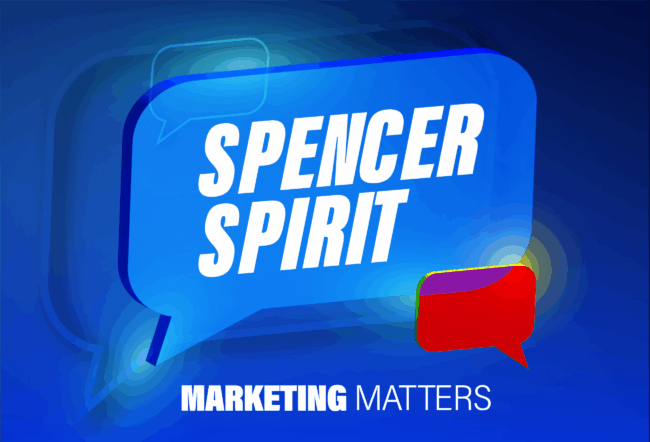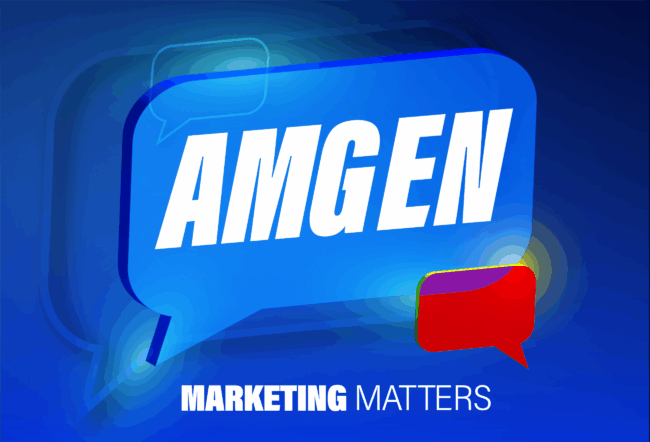Retailers are increasingly mining Big Data for insights into their customers. But consumer psychologist Vanessa Patrick says that what goes into the thought process of consumers before they decide to purchase is important too. Patrick, a marketing professor at the University of Houston, researches this area of psychology. She recently joined the Knowledge at Wharton show to talk about what’s going on in the minds of consumers, the nature of aesthetics and other undercurrents to buying and selling. The interview aired on the Wharton Business Radio network on SiriusXM Channel 111.
An edited transcript of the conversation appears below.
Knowledge at Wharton: If we went back 10 years, I don’t know how many people would have really guessed that the role of consumer psychologist would ever be an important part of the retail industry, but it seems that now more than ever, chains need to have that psychological viewpoint on who their consumers are.
Vanessa Patrick: Yes, this is a great time to be a consumer psychologist. There’s definitely an understanding amongst marketers about the need to understand the mindset of the consumer and what’s going on in that black box. For a long time, we were quite comfortable with just observing consumer responses and saying, “Well, we put up a sale sign and consumers buy. And we don’t care why.” Today, however, retailers are much more interested in understanding the “why” behind consumer behavior.
Knowledge at Wharton: How did you get involved in this area?
Patrick: Well, I have been in marketing for quite a few years. I did my MBA in India, after which I joined an advertising agency, J. Walter Thompson, and then Ogilvy and Mather, before I did my Ph.D. at the University of Southern California in Los Angeles.
One of the interesting things about being in advertising as an account executive is that you have to actually sell design to a client. And you have to make intuitive inferences about why that design is going to work, and couple that with marketing research insights. One of the things about the marketing research typically done in corporations and by corporations is that it focuses more on just the question of whether somebody would buy or not, and the psychology behind buying, without understanding the theoretical mechanisms driving that decision. And that informed how I viewed my research over the past 10 years.
I’ve got the background that says, “I used to sell these designs, I used to talk to clients and tell them why this would work,” but it came more from a gut response or a gut feel, as opposed to real, theoretical knowledge. So when I started my Ph.D., I really started studying emotions, and in the last six or seven years, really focusing more on design.
“Retailers are much more interested in understanding the ‘why’ behind consumer behavior.”
Knowledge at Wharton: How is it, though, that this realm of consumer psychology really evolved? Because I think a lot of people out there don’t really think about this aspect of retailing. But it’s something that’s been around for a while.
Patrick: People have been studying the psychology of everyday life for many, many years. I see consumer psychology as a branch of psychology that really focuses on consumption behavior — not only buying, but everything from how we dispose of products, how we consume products, how we buy products, how we perceive products.
Knowledge at Wharton: You focus a fair amount of your work on the relationship between marketing and aesthetics. How does that relationship come together?
Patrick: My research largely focuses on what I like to call “the two sides of the pleasure coin.” On one side, consumers focus on the pursuit of pleasure. The marketing of aesthetics, art, luxury — these focus on just the pursuit of consumption for pleasure. Then there’s the other side of the coin, which is the management of pleasure. Some of my work on self-regulation focuses on how we have to manage that pleasure, because we can’t always give in to those pleasures.
When you asked me about the marketing of aesthetics, design is everywhere — everything from the way your faucet is designed in a bathroom to the shower to a furniture piece or to packaging design. I look at marketing aesthetics very broadly. If you think about the history of aesthetics, philosophers have been talking about aesthetics since Plato. And for the most part, the philosophy of aesthetics has focused on natural environments and art.
So the philosophy dictionary defines aesthetics in terms of the sublime. More recently, though, there is a branch of philosophy that is focused on everyday aesthetics, which talks about the fact that everyday life is filled with aesthetic experiences. My interest lies more in an everyday consumer aesthetic.
Knowledge at Wharton: In terms of design, the term that I saw in one of your papers was “design salience.” Explain what that is, and how that plays in here.
Patrick: Design salience, as we define it in that paper, is just the fact that design is an important aspect of the particular product.
This is a trend that we’ve been seeing recently, largely because consumers respond very well to design, and marketers have realized that this is a differentiating factor. Think about the functionality of products: A lot of products pretty much do the same thing. What allows one company to differentiate their product from another is design. So, for example, companies like Dyson and Apple, their focus is on design, largely because it allows them to differentiate themselves and create a certain aesthetic that is associated with that brand.
“Consumers respond very well to design, and marketers have realized that this is a differentiating factor.”
Knowledge at Wharton: The interesting thing is that a design that appeals to one consumer might not appeal to another.
Patrick: Absolutely.
Knowledge at Wharton: So that design process is constantly changing for a lot of these companies.
Patrick: Absolutely. The need to have your finger on the pulse of the consumer and their changing views of aesthetics is really important. There’s very little academic research that is actually focused on that.
Knowledge at Wharton: Would you say that it’s a constantly changing process, one that doesn’t slow down in any way, because the thought process of the consumer changes quite a bit?
Patrick: Absolutely. Denis Dutton, who is an aesthetics philosopher, has talked about the fact that aesthetics is a human universal. What that means is that, regardless of where we are in the world and regardless of how far back you go in history, aesthetics has always played a very important role. But the form that it takes changes. What is considered aesthetically appealing in one part of the world may not necessarily be aesthetically appealing in another. That doesn’t mean that we don’t appreciate aesthetics, it’s just that aesthetics is appreciated differently.
Knowledge at Wharton: I would guess many people see “design” as something they have attained in some respects, especially if they are buying a beautiful faucet or a great suit for a man — that they’d view it as something that they are able to attain because of their lot in life, their financial setup in life at that moment.
Patrick: Absolutely. And designers recently have focused much more on the user. There was a time where a designer was considered an artist, and they basically created this work, they created this packaging, and the consumers — as we have to with art — had to basically be what is called disinterested. We have to accept that the designer had a motivation.
Today, designers are much more user-focused. Design focuses on the question: What helps the user? And user-focused design is really taking off right now. I’d like to actually refine that even further and call it insight-based design. I think you need to understand the psychology of the consumer and derive an insight about that consumer and develop a design based on that insight.
So for instance, I recently saw a product by Dyson called the Airblade Tap. So Dyson, of course, makes vacuum cleaners. The company’s founder, James Dyson, I think, he took 15 years to develop that first machine, and took about 5,000 prototypes because he just wanted to get it right from a consumer standpoint.
But the Airblade Tap is a faucet, a tap and a dryer all in one. And it’s got this beautiful airplane-wing design. And it’s based on the insight that most public bathrooms, you have to wash your hands and then walk across the bathroom and find a towel or a dryer. This says, “Why do we have to do that? Can’t we create an integrated design where that consumer is not doing something awkward, leaving a trail of water on the floor?”
“The need to have your finger on the pulse of the consumer and their changing views of aesthetics is really important.”
It’s really based on a consumer insight. And the design, of course, is beautiful, aesthetically appealing. But it’s also user-friendly. It’s based on something that says, “This is how we can improve everyday life.”
Knowledge at Wharton: You are speaking with Americus Reid’s class at Wharton. What specifically are you talking to them about?
Patrick: I recently wrote a paper that is in the press on everyday consumer aesthetics, which is — as I mentioned earlier in the show — about how aesthetics plays a role in everyday life.
We are going to be discussing a bunch of papers, some of which have more of a psychological bent. For instance, we’re talking about a paper on why people like glossy things. We know that people actually like glossy stuff, so that’s really not so interesting. What’s interesting is why. This particular paper has a series of studies in which we essentially try to understand: Why do people like glossy stuff? To do that, we have to rule out a bunch of explanations. One was, we like glossy because we see glossy all around us and we associate glossy with the good life.
Glossy magazines, luxury goods — and we basically said, “Well, it’s not only that, there could be something deeper to it.” We tested that by showing children, who have not been socialized, glossy pictures. And we find there’s a preference for glossy even amongst children. The paper really came from the idea of an observation of children: When children, infants, are shown glossy objects, they tend to lick them.
Knowledge at Wharton: Really?
Patrick: This was an observation that was in a paper many years ago, and we said, “Well, there must be something more to glossy than just the fact that we are socialized to like it or we think it’s pretty.” We really take an evolutionary psychology look at this question. We found that the preference for glossy stems from the need for water as a resource. If you’re thirsty, you prefer glossy more. If you are blindfolded and are asked to imagine — asked to touch a surface that has either gloss or matte, you are more likely to think that the glossy is better.
And if you are told that that surface is a surface of a landscape, you are more likely to say that there is more water on that landscape. The implicit associations are very deep-rooted. So that’s one of the papers we are talking about. I wrote that a couple of years ago.
It was published in the Journal of Consumer Psychology. I am talking about another paper called “Aesthetic Incongruity Resolution,” which is really quite an interesting phenomenon. It’s the need to resolve incongruity in our everyday environments. And this is something that happens to all of us. Let’s say you are gifted a tie. It’s a Hermes tie, it’s really nice, but it doesn’t match anything else that you have in your wardrobe. What do you do with it?
Do you go back to the Hermes store and return it? We show that the rational thing to do is to remove the product from your environment. But we show that consumers don’t want to do that when the product is high in design salience. Consumers actually buy more — they accommodate their product into the environment, which is quite interesting.
In fact, we have shown that when a product — this is unpublished and a current work-in-progress — is purchased that you like and don’t want to return, you tend to buy an average of two more products that can cost up to three times the amount of that initial product.
It’s really an interesting phenomenon that speaks to the burgeoning of our wardrobes on one hand, but also, the focus on aesthetics and the importance of aesthetics in daily life.



